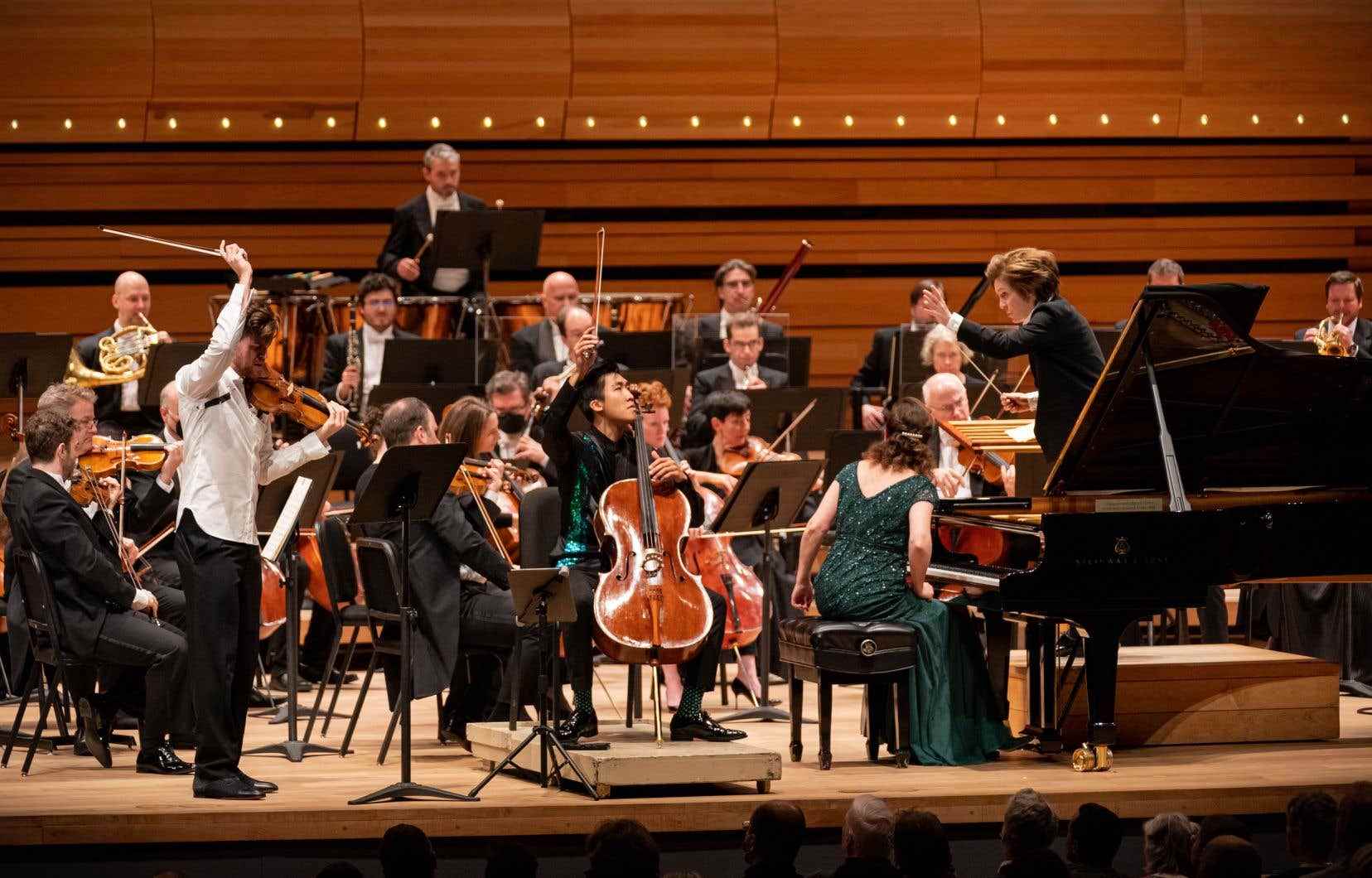At the time of its Competition, an edition dedicated to the piano which will conclude on Saturday at 2 p.m. with a final between three candidates who will play a concerto with the orchestra under the direction of Jacques Lacombe, the OSM had the idea of programming the Triple Concerto of Beethoven with three former laureates: a happy initiative.
Blake Pouliot, violin, is the winner of the 2016 OSM Competition, Bryan Cheng, cello, won the 2019 competition. As for Angela Hewitt, piano, she distinguished herself in 1975.
the Triple Concerto is a very delicate work that does not suffer from any imbalance. In 2012, the Toronto Orchestra demonstrated this to its cost by coming to play this work with André Laplante, Jonathan Crow and cellist Shauna Rolston, the latter appallingly bad. With the choice of three winners, the OSM minimized the risks.
The uniformity of excellence is therefore an asset, but it is not a guarantee of success if one of the members of the trio decides to want to pull the cover. This is how on the disc, the triple concerto the most expensive in history, Oistrakh, Rostropovitch, Richter and Karajan, is also one of the most disappointing, since three soloists plus a conductor try to steal the show.
A great cellist
What was very good about the Pouliot-Cheng-Hewitt trio is that as soon as Bryan Cheng spoke, we were reassured, because this interpretation was placed in the perspective of dialogue (the almost mischievous games between Pouliot and Cheng) and reason. No one here was going to try to play the big guns and the three soloists played in the same register of warm dialogue, which moreover suits Angela Hewitt very well.
In this trio we really have to mention Bryan Cheng, the one who set the tone. The more we hear this cellist, the more we like this simplicity, this art of not forcing anything. And the 1699 Stradivarius cello lent to him by the Canimex Foundation is a marvel.
This concert was conducted by Laurence Équilbey, former choirmaster converted to conducting. The contrast was great between her vertical and jerky gesture, vaguely stressful, and the winged and happy elegance of Lina González-Granados at OM last Friday.
But Laurence Équilbey is taking advantage of the current wave and vogue: good for her. Everyone will answer in their soul and conscience if a man with the same technique had been hired at the OSM (I’m obviously talking today, not about the bygone days of the parade of friends of the previous musical director, like Ruzicka, Adams, Eötvös or others ; as many concerts gags or disasters).
The French chef led Coriolanus of Beethoven and the 1st Symphony of Farrenc in the same way with a kind of vertical efficiency, precisely. With the engagement of an OSM-class orchestra, conducted so effectively by Olivier Thouin, the bars are in place and eloquent in themselves, with sharp contrasts. But the air and the “flesh” in the lines (wooden phrasing in Coriolanus), in what sings and responds to each other, are as if dried up. The same in the 2nd movement of Farrenc: phrases without curves or contours and, in the 4th movement, slight drops in tension.
This black and white music that lacks flesh gives Farrenc a very “post Sturm und Drang », whereas Yannick Nézet-Séguin, a month ago, drew the same work towards Berlioz. Yes, you read that right: Montreal was entitled to the 1st Symphony of Louise Farrenc in less than a month.
This is what results when everyone pours in unison into the dogma of the henceforth sacrosanct “diversity”. The more diverse it is, the more it is the same: what an irony!
